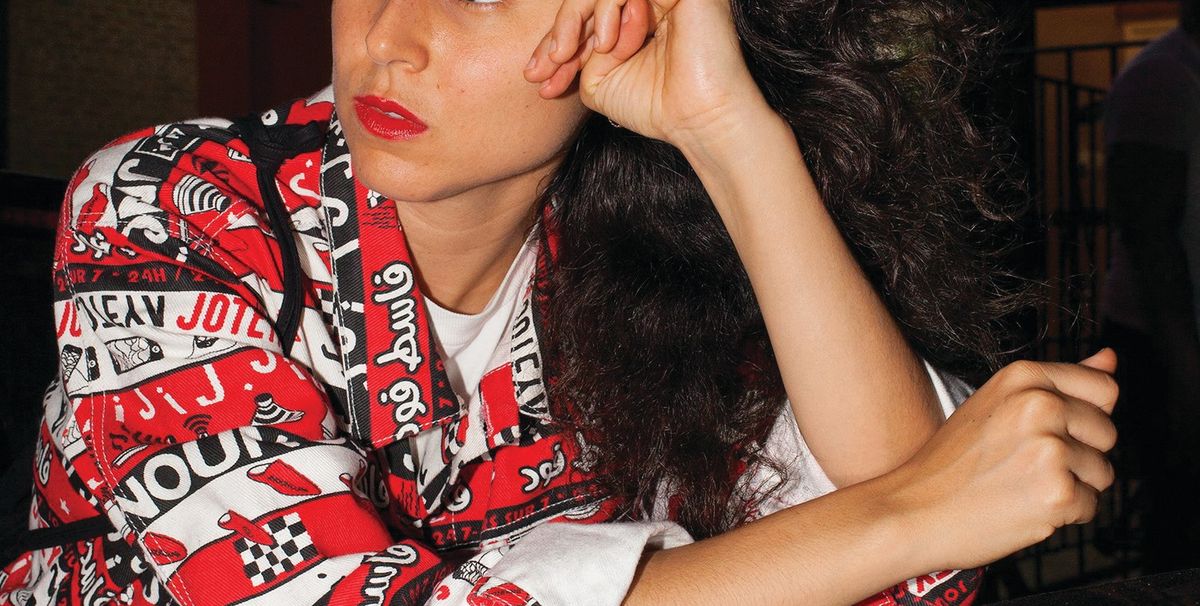Humour is essential for engaging with, and enjoying, the work of Rabat-born, Brooklyn-based artist Meriem Bennani. While her work certainly contends with critical and serious issues (the identity and status of Muslim women in the contemporary mediasphere is a recurring theme) through playful and surrealist imaginings of the lives of others, humour acts as the axis around which her work is constructed. Her ongoing project Fardaous Funjab (2015), for example, is a mockumentary series about an “avant-garde hijab designer” which riffs on the contemporary reality television format to challenge preconceptions about the orthodoxy of Islamic attire.
For Art Dubai’s 11th edition, Bennani has created an installation, entitled Ghariba/Stranger, at the Art Dubai Bar on Madinat Jumeirah’s Fort Island. The installation features four interactive sculptures, which draw on the formal visual language of beauty salons, massage parlours and entertainment parks, eliciting a sense of playful escapism and curiosity. Each sculpture is an ordinary piece of furniture, such as a bench or lounge chair, serving as a viewing station via a large dome-like device worn on the viewer’s head, similar to globe-shaped hair dryers. Once you’re suitably fitted, you can experience a short video at each station, created by Bennani for the installation. The experience is absurd, disorienting and extremely funny.
Ghariba/Stranger refers not only to the oddness of Bennani’s sculptural devices but also to their unifying potential in bringing strangers together through laughter. It also harks back to the content of the five films in the installation. In these portraits of Moroccan women, Bennani experiments with genre in order to emphasise how much our perception of an individual can be manipulated through subtext and editing. The Art Newspaper caught up with her ahead of the fair.
The Art Newspaper: First time in Dubai?
Meriem Bennani: Yes, this is my first time so my mind is exploding. There is so much happening and [it] looks so surreal, like 3D [renderings].
It seems like the perfect setting for your work. You use a lot of post-production and animation techniques to enhance your films and, in a way, to bend the fabric of, and distort, reality.
Definitely, that is how I make the footage my own. When I started making short videos and playing around with them on Instagram, I realised that this created a lot of response, and I didn’t know whether this was good or bad but did feel that the most exciting reactions were when you don’t know what is real or unreal. When it starts to get confusing, that is when it is most exciting for me. So, I started pushing the effects further while also making the footage as casual as possible and only using my iPhone so that it doesn’t feel as if it’s production heavy. Ghariba/Stranger is the first work that I haven’t shot on my iPhone.
Similarly, there is this tension in your work between these highly constructed ideas of femininity, where you draw on the visual language of reality television to create exaggerated characters and scenarios, and, for instance, the documentary-style video footage that featured in your Gradual Kingdom installation at Signal gallery in Brooklyn, New York. What approach have you taken here?
It’s very schizophrenic. The videos are portraits of four different Moroccan women, and each of the videos alternates between different genres. Sometimes the women appear as the cast from a reality TV show like The Real Housewives, sometimes it feels like [a home video], sometimes a telenovela and sometimes a documentary.
How do these different components come together?
What I’m doing is dropping hints for people to piece the different narratives together in order to suggest that there is an overarching narrative structure. From one viewing station to another you can kind of piece things together, but really there’s nothing. It is imitating the thing that we do everyday, with our own lives and our friends through social media and the news. We tie together all of these narratives to create our reality. Ghariba/Stranger is about the way that we get information and synthesise it. It is also a celebration of aspects of womanhood and of Moroccan women that I really love.
How do you expect visitors to interact with your sculptures at the Art Dubai Bar?
The sculptures are very referential to design but almost in a jokey way, of what good design should be like. Design is treated so seriously, and of course in Dubai many places are designed to be futuristic and shiny. The sculptures adopt that language but when people use them it will be a bit awkward and strange. There is a lot of humour in imagining that when you sit in one of these stations with your head in the dome watching a video, spending time with these women and getting to know them, from the outside it may look like you are getting your hair done.


